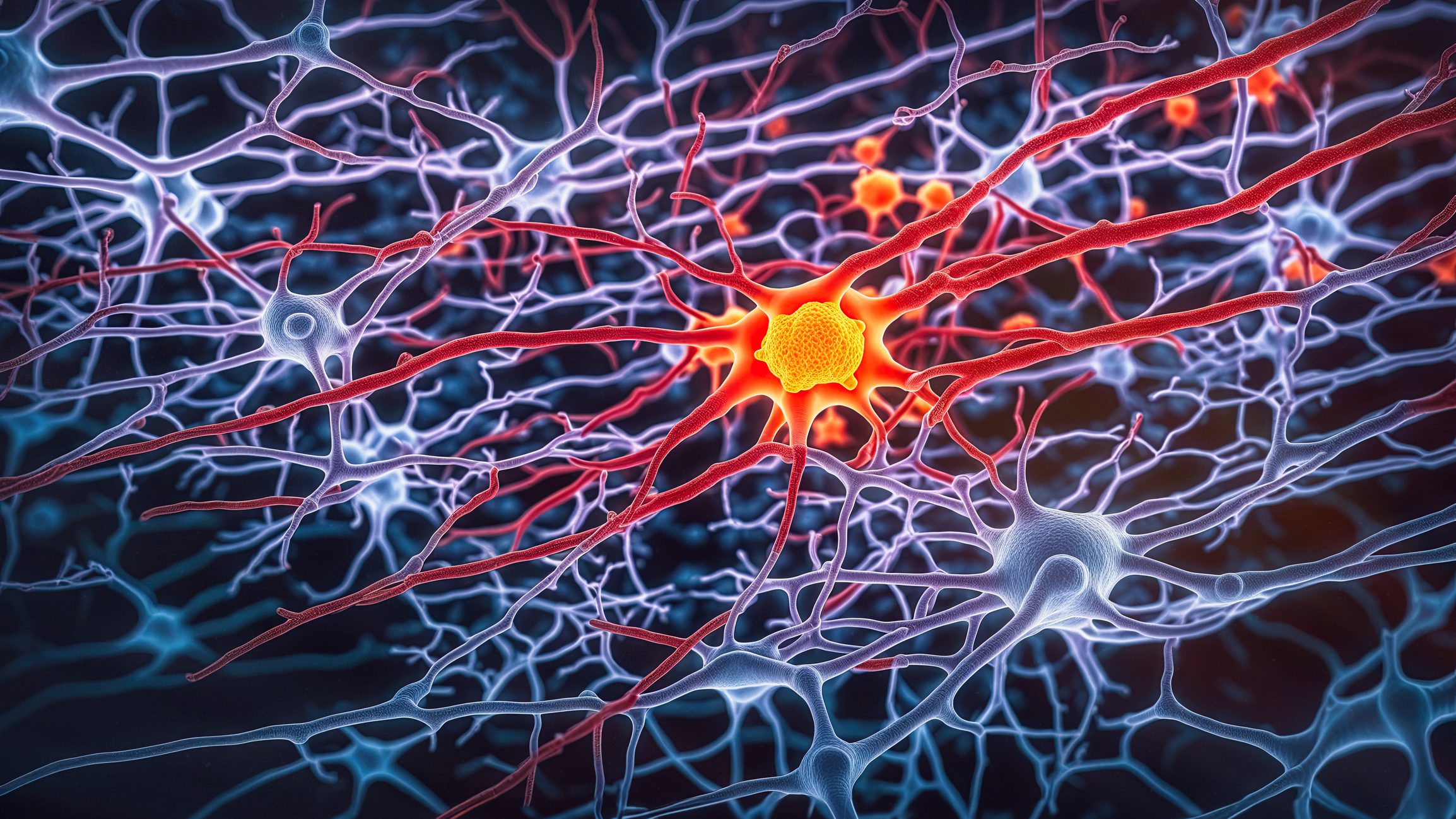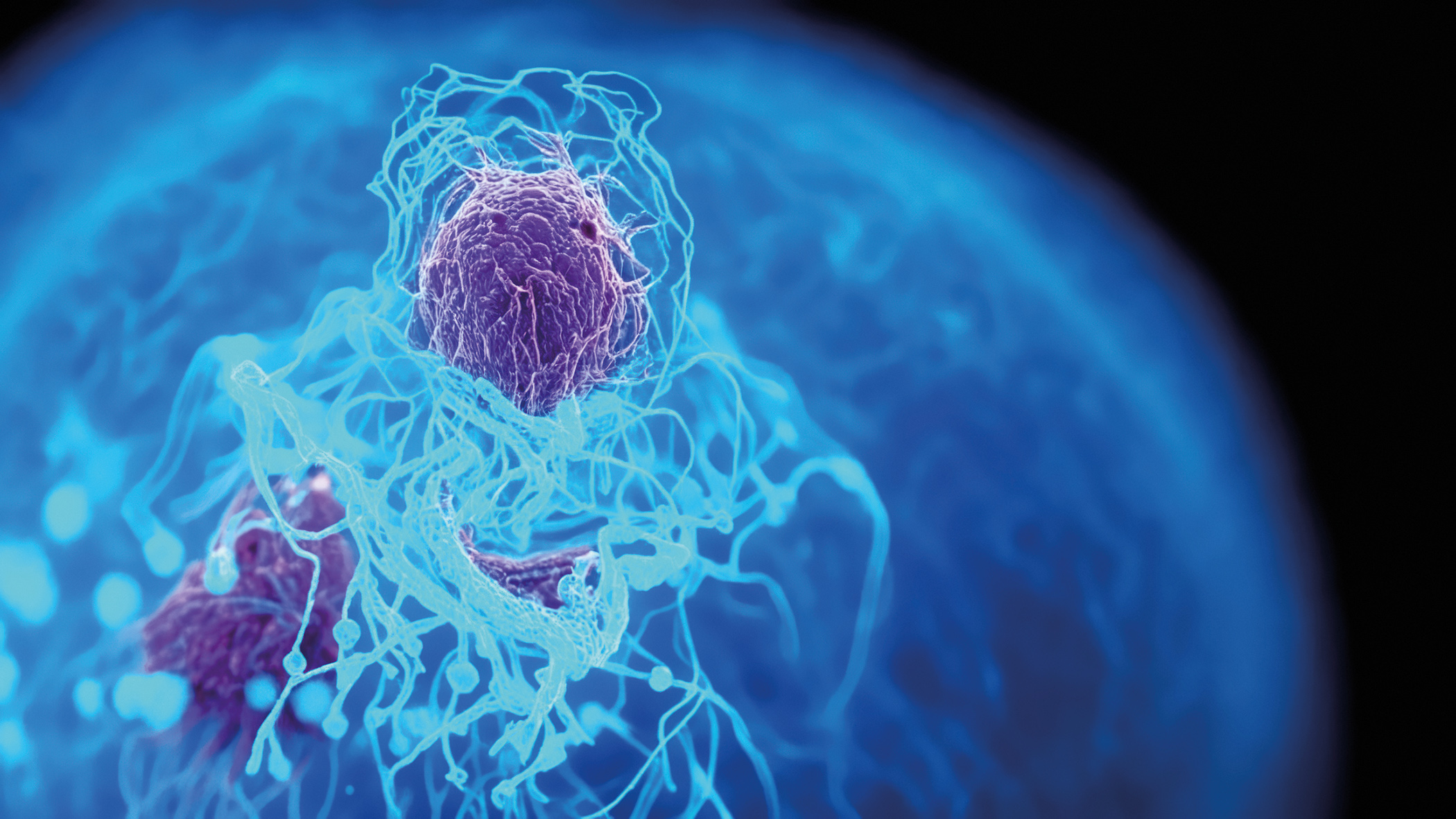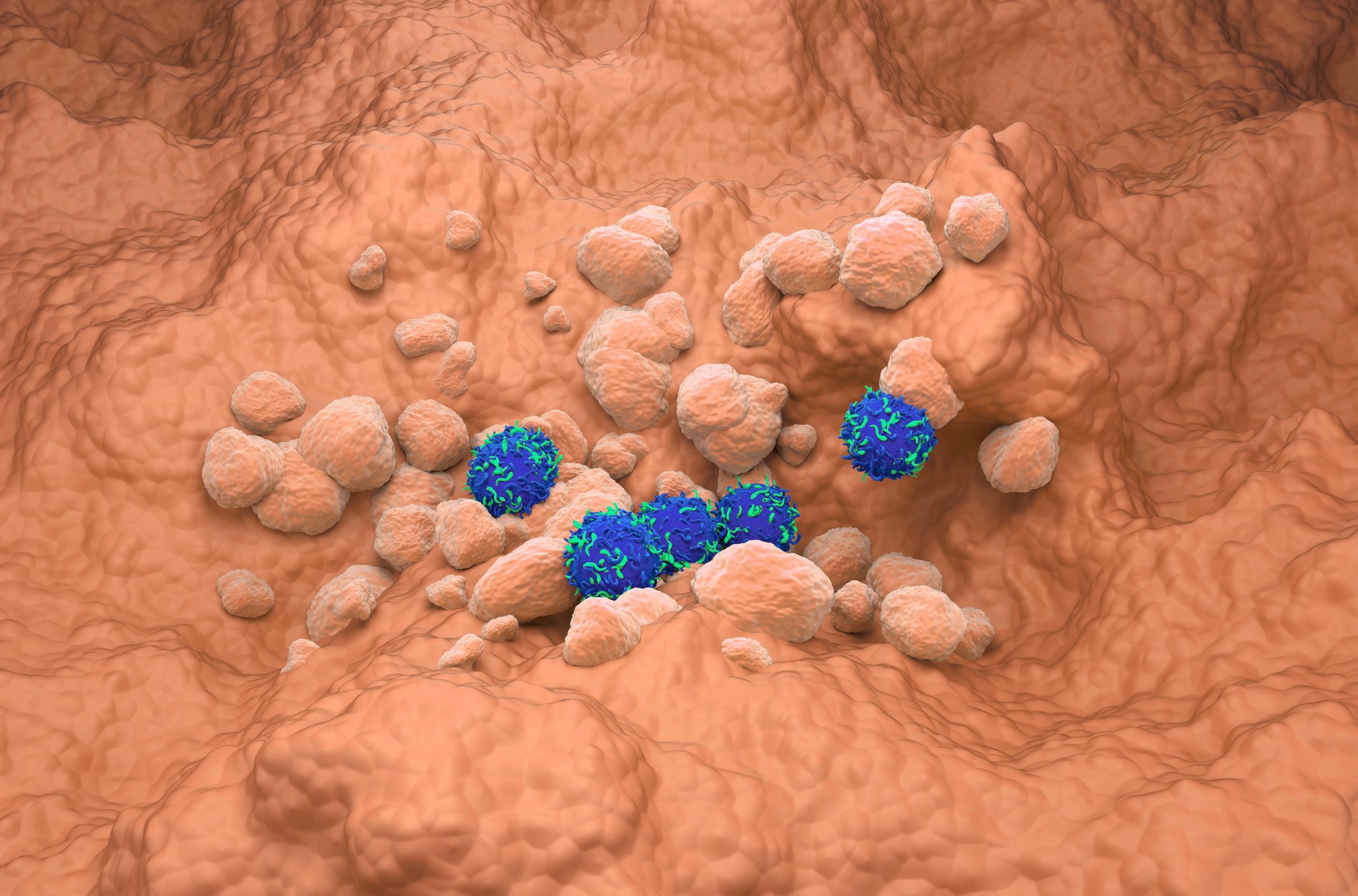What are the causes that lead to an inadequate response to insults? How does an organ like the lung change with age, making the older population more susceptible to age-related diseases such as COPD, lung cancer and idiopathic pulmonary fibrosis (IPF), leading to lower life expectancy, quality of life and higher care needs? And how far are we in the search for the holy grail that will stop ageing and offer us a suitable treatment option for old age?
In light of the COVID-19 pandemic and its severe respiratory complications, it has been recognized that older people are more susceptible to respiratory diseases. In patients of advanced age, the consequences of respiratory infections such as SARS-CoV-2 are more severe and the mortality rate is higher. As the world’s population ages, societies and healthcare systems are facing a significant increase in respiratory diseases and their associated complications. In addition to the correlation between age and an increased incidence of infections, a higher prevalence of chronic lung diseases (CLD) is also observed with age. But what are the causes that lead to an inadequate response to insults? How does an organ such as the lung change with age, making the older population more susceptible to age-related diseases such as chronic obstructive pulmonary disease (COPD), lung cancer and idiopathic pulmonary fibrosis (IPF), leading to lower life expectancy, quality of life and a higher need for care? And how far are we in the search for the holy grail that will stop ageing and offer us a suitable treatment option for old age and gray hair?
Senescence
In general, aging is associated with progressive impairment of organ function, making older people more susceptible to developing diseases, followed by possible death due to daily challenges. The degenerative mechanisms underlying ageing are cellular mechanisms that López-Otín et al. have described as a hallmark of ageing. Recently, they updated their previous nine hallmarks to twelve hallmarks of aging, which include genomic instabilities, telomere attrition, epigenetic alterations, loss of proteostasis, impaired macroautophagy, deregulated nutrient sensitivity, mitochondrial dysfunction, cellular senescence, altered intercellular communication, chronic inflammation, dysbiosis and stem cell exhaustion [1]. A central feature is cellular senescence and its accompanying processes, which were discovered more than 60 years ago by Hayflick and Moorehead. They observed that primary human fibroblasts in culture have a limited number of replications before entering an irreversible state of cell growth arrest. Since then, senescence has become a topic and new field of research to understand the underlying mechanisms and pave the way for pharmaceutical approaches to prevent and treat age-related diseases.
Several signs of aging are associated with the most deadly chronic lung diseases: COPD, IPF and lung cancer [2]. The accumulation of senescent cells is considered to be one of the main causes of organ dysfunction in old age and the development of these diseases. Cellular senescence is an irreversible growth arrest that occurs after a certain number of replications in the cell cycle or due to exogenous factors such as stress. It is characterized by the fact that the re-entry into the cell cycle and thus the ability to proliferate is irreversible. Growth arrest can be caused either by the shortening of telomeres during each replication or by induced DNA damage due to stress or other factors. Telomeres are the ends of chromosomes that do not contain coded genetic information but have a protective function.
The enzyme telomerase, which is responsible for maintaining telomeres, is often the target of mutations and the pathomechanism of certain diseases, including chronic lung diseases such as IPF. Defects in the process of DNA repair and genomic instabilities, together with the age-related shortening of telomeres, contribute to genetic damage, another hallmark of ageing. The DNA damage of the shortening telomeres activates the p53 tumor suppressor pathway at the cellular level. Factors that contribute to senescence include cellular stress, ionizing radiation, cytotoxic therapies and somatic mutations that lead to activation of the p16 pathway. Activation of the p53 and p16 signaling pathways leads to the induction of p21, a senescence marker, and thus to cell cycle arrest. A senescent cell is characterized by the secretion of proinflammatory cytokines and the profibrotic senescence-associated secretory phenotype (SASP), through which the cell mediates its cell-external functions. The SASP consists of various cytokines and inflammatory mediators that serve as signaling messengers. One of them is the transforming growth factor beta (TGF-β). TGF-β induces senescence in the surrounding cells through paracrine secretion, leading to tissue remodeling (Fig. 1) . In addition, the SASP recruits immune cells such as macrophages, neutrophils, natural killer (NK) cells and T cells, leading to the elimination of senescent cells by phagocytosis and apoptosis, a programmed cell death. Taken together, this leads to stem cell exhaustion and chronic inflammation. Age-related and epigenetic changes in the intrinsic growth behavior of cells and intercellular communication could also contribute to the observed depletion of stem cells and lead to an impairment of the regenerative function of the entire human body.
Older people more susceptible to external pathogens
The loss of proteostasis can be explained by the dysregulation of proteasomal function, which leads to inefficient degradation of the cell’s own proteins. This can lead to an increased accumulation of waste products within the cell, resulting in an exaggerated cellular stress response. Metabolic changes such as increased glycolysis, mitochondrial dysfunction and the occurrence of reactive oxygen species (ROS) can also be observed. While low levels of ROS generally trigger apoptosis, high levels of ROS are associated with ageing. This oxidative stress could contribute to reduced proteasomal activity as well as to transcriptional upregulation of p53, induction of p21 and stress-induced senescence [3].
The human body functions through the interaction of various circulating organ systems that influence each other. In response to contact with disease-causing pathogens, the body’s first line of defense signals the innate immune system to fight the invasion by eliminating the threat and thus averting tissue damage. Since older people are more susceptible to diseases triggered by external pathogens such as viruses, and since chronic inflammation is also considered a hallmark of ageing, it is crucial to investigate age-related changes in the immune system and their potential contribution to age-related diseases or even their preventive effect. Immune cells are recruited by SASP secreted by senescent cells, which is another reason to study the immune system in the context of aging. The process of an ageing immune system is known as immunosenescence and was originally described by Roy Walford.
In summary, the ageing immune system fails to efficiently eliminate senescent cells, leading to an increase in their number and accumulation. The characteristics and changes of ageing described above also apply to the immune system. Recent studies have brought to light several characteristics of the ageing immune system. One key aspect is the phenomenon of “inflammaging”. As Claudio Fransceschi discovered in 2000, ageing leads to constant, low-grade chronic inflammation, which is characterized by increased inflammatory markers in the bloodstream. Another significant change in old age is the regression of the thymus, which leads to a change in cell composition. This leads to a reduced production of T lymphocytes in the thymus, but also to a reduced number of B lymphocytes in the bone marrow and a decrease in fresh naive T cells. In addition, the mature lymphocytes are less functional and the T cells are less activated. As a result, the function of the adaptive immune system decreases considerably. Prolonged antigenic stimulation by environmental factors and pathogens with increasing age can further stimulate the immune system through constant activation of macrophages, leading to chronic stress and an inflammatory state. In addition, the function of individual cells deteriorates with increasing age. Macrophages have a reduced phagocytic capacity, while antigen-presenting cells have a reduced capacity due to reduced expression of co-receptors and MHCII molecules, which are crucial for recognizing invading pathogens and eliminating the binding function. This relatively recent realization of how the immune system contributes to the aging process has led to many questions about understanding, but also about possible interventions and a considerable amount of ongoing research [4].
However, it is important to understand that senescence is a natural and necessary phenomenon. By alerting the immune system to eliminate senescent cells, genomic instability and the accumulation of DNA damage are prevented. The activation of certain oncogenes and the loss of tumor suppressor genes induce senescence. In this context, oncogene-induced senescence acts as tumor suppression by promoting the elimination of tumors and thus preventing the accumulation of senescent cells and the potential occurrence of organ dysfunction. Senescence is already present in the lungs immediately after birth and plays a central role in the postnatal development of the lungs. With increasing age, however, the balance between the accumulation and degradation of senescent cells shifts [5].
Ageing in the lungs
Chronic lung diseases, particularly COPD, have become the third most common cause of death. Factors contributing to this alarming trend include increased risk factors such as pollution and smoking, but the ageing of the population also plays a major role in this development [6]. The lungs occupy a unique position as an organ that is actively exposed to the outside world through the inhalation of air and potentially carries pathogens such as bacteria, pollen, particles, vapors and many others. Consequently, a well-functioning immune response is of crucial importance. As mentioned above, it is known that the ageing process leads to a less robust immune response, a phenomenon known as immunosenescence. Based on this knowledge, special vaccinations have been developed for the elderly population that contain a higher antigen concentration and an additional booster to strengthen the immune response.
To understand how the lungs change with age, we need to take a closer look at their structure. Two main bronchi extend from the trachea to each lung. They branch out into smaller bronchi and finally into bronchioles. At the ends of these bronchioles are the alveoli, where gas exchange takes place (Fig. 2) . The alveoli of the lungs consist of different cell types, which together contribute to their functionality. The alveolar membrane, which consists of alveolar epithelial cells, is covered with a surfactant layer and lines the inner surface of the alveolus, which comes into contact with the inhaled air. Around these alveoli, endothelial cells form the capillaries, which are responsible for supplying deoxygenated blood to the alveoli and transporting oxygen-rich blood from the lungs to the rest of the human body. The connective tissue in the form of an extracellular matrix (ECM) and the fibroblasts that produce it is located between these endothelial cells and the alveolar epithelial cells in the alveolus. In addition, immune cells, both circulating and sessile, such as alveolar macrophages, are present in the lung tissue and play a crucial role in the primary defense against invading pathogens. Alveolar epithelial cells type 2 (AEC2), which produce surfactant to reduce surface tension in the alveoli, serve as epithelial stem cells of the lung. They are able to differentiate via intermediate stages into alveolar epithelial cells type 1 (AEC1), which are responsible for facilitating gas exchange. These AEC1 make up the majority of the cells in the alveoli [7].
Ageing leads to various changes, including shifts in the cellular composition of the lungs. In particular, a decrease in the number of alveolar epithelial cells and an increase in fibroblasts and endothelial cells can be observed. These changes are accompanied by enlarged alveoli, a reduction in lung elasticity and a thickening of the walls of the small airways, which leads to an overall reduction in lung capacity. These changes are attributed to the depletion of pulmonary stem cells and an altered ECM composition. A higher predisposition to pneumonia in the elderly population has been explained by reduced mucociliary clearance and a lower cilia beat frequency of the respiratory ciliated epithelium in the airways, which plays a central role in the clearance of pathogens [2].
Gene mutations lead to shortened telomeres in IPF
Fibrosing interstitial lung diseases such as IPF are characterized by the progressive and irreversible formation of scar tissue in the lung parenchyma. Parallel to COPD as an age-related disease, IPF is strongly associated with ageing. While fibroblasts are considered to be one of the main cell types responsible for the development and progression of IPF by producing an enlarged ECM and thus scar tissue, numerous cell-specific changes have been observed in the different cell types. Telomere gene mutations have been identified in patient samples, which lead to shortened telomeres in IPF. In AEC2 in particular, numerous gene mutations have been identified that are associated with DNA damage and are attributable to telomeric changes. Therefore, telomere erosion is considered to be one of the driving factors in IPF. In addition, mitochondrial dysfunction and the presence of SASP are detected in IPF lungs. Further analysis revealed specific tissue markers associated with apoptosis and senescence in AEC2s, such as p21, p16 and increased activation of senescence-associated beta-galactosidase (SA-β-galactosidase) compared to controls. SA-β-galactosidase serves as an additional biomarker for measuring senescence in cells. Overall, the increased senescence activity observed in IPF impairs the regenerative capacity of lung stem cells and consequently affects overall lung regeneration [8,9].
Since the lungs are exposed to pathogens from outside, they need a local defense mechanism. There are resident and circulating immune cells in the lungs, most of which are alveolar macrophages (AM). These specialized AMs act as the immune system’s first response. In the homeostatic lung, AM secrete anti-inflammatory cytokines to maintain the lung environment until they are activated by pathogens. However, in the aged lung or during inflammation, AMs release inflammatory mediators such as pro-inflammatory cytokines, thereby affecting the alveolar epithelial cells and other cell types in the lung. Among the secreted proinflammatory cytokines, TGF-β has a specific influence on the cells. Fibroblasts are activated by TGF-β and driven to differentiate into myofibroblasts. Since fibroblasts produce components of the ECM, their activation leads to its expansion. This leads to fibrosis, typically characterized by increased deposition of the ECM, which prevents sufficient gas exchange due to an increased distance between AEC1 and the capillaries. As already mentioned, this change is considered to be one of the main causes of IPF [4]. In addition, the impairment of the immune system’s function associated with the ageing process and its reduced defense against pathogens can further exacerbate persistent IPF and its progression.
The growing interest in senescence has not only contributed significantly to the understanding of this process, but also to finding a cure for age-related diseases. New senolytics have come onto the pharmaceutical market, but are not yet used in clinical practice. As their name suggests, senolytics remedy senescence by inhibiting the anti-apoptotic pathways of senescent cells (SCAP), thereby inducing apoptosis in senescent cells and potentially limiting age-related dysfunction. In recent studies, the senolytics dasatinib, a tyrosine kinase inhibitor, and quercetin, a non-specific kinase inhibitor targeting the metabolic modules responsible for the SCAP genes, were investigated in patients with IPF in clinical trials. The positive effect on the alveolar epithelium and the fibrosis-inhibiting response to these drugs has been demonstrated in experimental ex vivo studies [10].
Studies underline the stem cell modulating ability of immune cells
Despite all efforts, the holy grail has not yet been found and no senolytics have yet been approved as a treatment option due to insufficient selectivity or side effects. However, early-stage trials are underway, paving the way for future breakthroughs. Many cell interactions, such as interference with the immune system, in the development and progression of senescence are not yet fully understood, highlighting the need for further research, particularly in view of the increasing ageing of the population.
In our research group, we concentrate on senescent changes, especially in the distal lung. The most recent focus is on the effects of the impaired immune system on the alveolar epithelium. Recent studies emphasize the stem cell modulating ability of immune cells. As described above, senescent cells recruit immune cells such as macrophages via various mediators in order to eliminate them. In contrast, macrophages secrete various cytokines, including interleukin 1β (Il-1β), 6 (Il-6) or tumor necrosis factor α (TNF-α), which directly affect stem cells by impairing their proliferation and differentiation capacities and are also associated with immunosenescence. We have developed an immune stem cell-organoid model to study the interaction between alveolar stem cells and alveolar macrophages (AM) and show that AMs and their secretome can influence the stem cell behavior of alveolar epithelial cells in different ways. In the future, this model can be further expanded in order to find possible treatment options that intervene in the immunoregulatory effect that the aged immune system has on the function of alveolar stem cells.
Take-Home Messages
- The mechanism behind ageing is senescence, an irreversible exit from the cell cycle.
- Senescence is a physiological process that has protective and developmental influences, but also contributes to the pathophysiology of various diseases.
- In order to halt the process of senescence in diseases such as idiopathic pulmonary fibrosis, the use of senolytics is being researched.
Literature:
- López-Otín C, Blasco MA, Partridge L, et al: Hallmarks of aging: An expanding universe. Cell 2023; 186(2): 243-278.
- Meiners S, Eickelberg O, Königshoff M: Hallmarks of the aging lung. European Respiratory Journal 2015; 45(3): 807-827.
- Muñoz-Espín D, Serrano M: Cellular senescence: from physiology to pathology. Nature reviews Molecular cell biology 2014; 15(7): 482-496.
- Li Y, Wang C, Peng M: Aging Immune System and It’s Correlation With Liability to Severe Lung Complications. Front Public Health 2021; 9: 735151.
- Yao H, Wallace J, Peterson AL, et al: Timing and cell specificity of senescence drives postnatal lung development and injury. Nature Communications 2023; 14(1): 273.
- Book EW: The Burden of Lung Disease. ERS White Book Sheffield 2013.
- Barkauskas CE, Cronce MJ, Rackley CR, et al: Type 2 alveolar cells are stem cells in adult lung. The Journal of clinical investigation 2013; 123(7): 3025-3036.
- Lehmann M, Hu Q, Hu Y, et al: Chronic WNT/β-catenin signaling induces cellular senescence in lung epithelial cells. Cell Signal 2020; 70: 109588.
- Lederer DJ, Martinez FJ: Idiopathic Pulmonary Fibrosis. N Engl J Med 2018; 378(19): 1811-1823.
- Lehmann M, Korfei M, Mutze K, et al: Senolytic drugs target alveolar epithelial cell function and attenuate experimental lung fibrosis ex vivo. European Respiratory Journal 2017; 50(2): 1602367.
InFo PNEUMOLOGY & ALLERGOLOGY 2023; 5(4): 16-20














